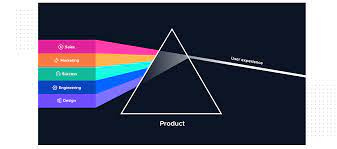
Sales/Marketing/Business
Product-Led Growth (PLG)
- Mastering Product-Led Growth (PLG): Boost Customer Acquisition
Product-Led Growth (PLG)
Product-Led Growth (PLG) is a go-to-market strategy that relies on the product itself as the primary driver of customer acquisition, retention, and expansion. In other words, a product-led company prioritizes creating a great product experience that drives customers to adopt and recommend the product to others. Companies like Dropbox, Slack, and Zoom have become household names thanks to their successful PLG strategies.
But becoming a PLG company is not an easy task. It requires a fundamental shift in the way a company thinks about its product, its customers, and its growth. That's where the PLG Maturity Assessment comes in. It's a step-by-step plan that helps companies assess their current PLG maturity level and provides a roadmap to becoming an elite PLG company.

Key Features:
The PLG Maturity Assessment is a comprehensive framework that covers all aspects of a PLG strategy. Here are some of its key features:
- Self-Assessment: The assessment starts with a self-assessment that helps companies understand their current PLG maturity level. This self-assessment covers various areas, including product design, user experience, pricing, and metrics.
- Maturity Model: Based on the self-assessment, the assessment provides a maturity model that categorizes companies into four levels of PLG maturity: Emerging, Developing, Advanced, and Elite. Each level has its characteristics and recommended actions.
- Roadmap: Once a company knows its PLG maturity level, the assessment provides a roadmap that outlines the steps needed to move to the next level. The roadmap includes specific actions and recommendations for each area of the PLG strategy.
- Best Practices: The assessment also includes best practices and case studies from successful PLG companies. These best practices serve as a guide for companies that want to implement a successful PLG strategy.

How it works:
The PLG Maturity Assessment is a structured process that companies can follow to become elite PLG companies. Here are the steps involved:
- Self-Assessment: The first step is to complete the self-assessment. This assessment covers various areas of a PLG strategy, including product design, user experience, pricing, and metrics. Based on the assessment, the company is categorized into one of four PLG maturity levels: Emerging, Developing, Advanced, and Elite.
- Roadmap: Once the company knows its PLG maturity level, the assessment provides a roadmap that outlines the steps needed to move to the next level. The roadmap includes specific actions and recommendations for each area of the PLG strategy.
- Implementation: The next step is to implement the recommendations outlined in the roadmap. This may involve changes to the product, pricing, metrics, and other areas of the PLG strategy.
- Iteration: PLG is an iterative process, and companies must continuously evaluate and improve their PLG strategy. The assessment provides a framework for companies to assess their progress and make necessary adjustments.
In conclusion, the PLG Maturity Assessment is a comprehensive framework that helps companies become elite PLG companies. It provides a roadmap for companies to assess their current PLG maturity level, identify areas for improvement, and implement a successful PLG strategy. With the PLG Maturity Assessment, companies can create a product experience that drives customer acquisition, retention, and expansion.







